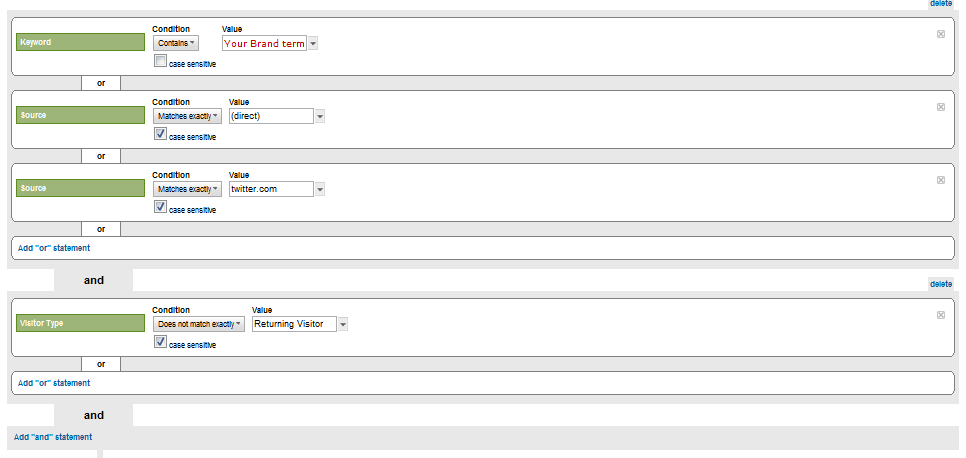I’ve had the distinct pleasure of being surrounded by some amazing social media minds. From working relationships to loose affiliations as neighbors, I consider folks like Michael Brito, Dave Evans, Alex Mouldovan, Mike Merrill, and Deb Robison (who is getting older today so wish her a Happy Birthday!) among those who influenced my path towards some amazing work in Social Business Intelligence.
If not yet on the bandwagon, you should be.
Article Highlights
I’m still figuring out Business Intelligence, what is Social Business Intelligence???
Brito recently informed me that Buddymedia, with Booz & Co., just wrapped up a fantastic study reviewing the ambitions organizations have for social media.
 According to the study of Fortune 100 companies, 63% have plans to integrate social media as part of their overall marketing activities with 59% increasing their spend in social media monitoring to support that integration. Social media monitoring is the increasingly common practice of leveraging technology (a web service) to track what’s going with your brand in Facebook, twitter, and other social channels. This listening is a critical step in creating intelligence but in and of itself isn’t Social Business Intelligence (SBI).
According to the study of Fortune 100 companies, 63% have plans to integrate social media as part of their overall marketing activities with 59% increasing their spend in social media monitoring to support that integration. Social media monitoring is the increasingly common practice of leveraging technology (a web service) to track what’s going with your brand in Facebook, twitter, and other social channels. This listening is a critical step in creating intelligence but in and of itself isn’t Social Business Intelligence (SBI).
46% of those involved in the study or are investing in the technology and data to enable actionable intelligence, best practices, with 56% citing their intent to use social media not just for advertising or customer support but consumer insights and innovation. Now we’re getting somewhere.
Social Business Intelligence is the aggregate of channels and metrics that when leveraged, provide real-time, actionable insight about and to your organization. More simply put, Social Business Intelligence can tell you what’s driving adoption, the channels that matter, a tremendous depth of profile information about customers and prospects, and the no-longer elusive ROI on time spent with social media.
Referred to as The Knowledge Management Connection and the CEO of SEO, according to Forrester’s James Kobielus, SBI is unique in it’s ability to finally provide the discovery, capture, monitoring, mining, classification, and predictive analysis of content and communication. In a very real way, the data revealed through SBI is the holy grail of a search engine – an accurate representation of the popularity of and trends related to a business, product, service, or organization; the CEO of SEO.
How does Social Business Intelligence Work?
![]() As suggested above, listening to chatter on social networks is only the tip of the SBI iceberg and if your organization is only trying to figure out how to listen (or only listening), you’re missing the boat.
As suggested above, listening to chatter on social networks is only the tip of the SBI iceberg and if your organization is only trying to figure out how to listen (or only listening), you’re missing the boat.
Today organizations spend thousands on agencies and consultants to help profile and segment their leads, prospects, and consumers. They spend thousands more on services that help identify others that match those profiles in an attempt by marketers to find people more likely to convert. An element of Social Business Intelligence depends on the fact that these profiles are readily available; and, in fact, they are. No longer do organizations need to run surveys, demographic reports, and studies to profile their customers, SBI technologies do it for you in minutes at a fraction of the cost. For without that profile data, insight to social media is limited to only listening and reporting. Social marketing becomes social intelligence because we’ve moved beyond listening to an understanding of WHO engages your brand.
But it doesn’t end with who, where, and what. There is something to the business end of SBI and it is the most valuable and critical. Having learned who supports your business, ultimately you want to know how they do so. Are they resulting in revenue and if so how much? Are they referring other customers and if so how? Are they making disparaging comments that actually impact your business? Social Business Intelligence closes thesocial marketing to conversion loop to provide insight to the ROI of everything in which your organization might be involved.
Let’s paint that picture more clearly…
Social Media & Marketing
- What: Content – tweet, post, share
- Where: Channel – twitter, email, facebook
Social Intelligence
- What
- Where
- Who: John Smith from Austin, TX who has a Klout (influence) score of 65, income of $200k, 3 kids, and works for Dell
Social Business Intelligence
- What
- Where
- Who
- How or Why: Resulting in a conversion, RSVP, donation, referral, criticism, etc.
Notice I mentioned email up there? It’s a bit of a misnomer to think of SBI as only applying to Twitter and Facebook. Social Business Intelligence listens to everything, helps you identify who, and provides insight to the impact those people have on your bottom line. And yes, it’s about more than tracking the performance of your marketing through a channel, it can be leveraged to provide insight to customer service, recruiting, supply chain management, operations, and more. Dion Hinchcliffe has pulled together an amazing list of considerations with regard to the impact and strategic use of SBI.
The point is, the fact that ONLY 56% of Fortune 100 companies intend to use social media for consumer insights and innovation is disturbing and if you aren’t in that segment, applying Social Business Intelligence across your entire organization, well, call me so I don’t invest in your future.
Most important is that the technology being developed today puts all of that information in one place. Social Business Intelligence isn’t this conceptual analytics idea but real innovations that exist right now to make it ridiculously easy to know what’s going on. IBM has invested millions in SBI and Jeff Schick, IBM’s VP of Social Computing Software explains best why this needs your attention:
“The idea of getting the right person over the right opportunity at the right time to yield the right result was genuinely a business imperative [at IBM]… Social analytics is playing a huge role in not just making recommendations of content, people and communities, but in recommending what an organization needs do to better its financial results.”
Influencing Me
My take on the whole space is that it’s still too complicated, costly, and confusing. It took me the length of a significant post just to introduce to you the fundamentals. Call me crazy but the technology, enabled by web services in the past few years, makes it such that this intelligence should be readily available at the click of a button. For the past few months, I’ve been building just that in GroupCharger.
To first simplify the entire concept of Social Business Intelligence, we’ve developed for your organization a single stat, a GroupScore that accounts for all this data we’ve reviewed to give you a sense for how you’re doing. From one period to the next, your GroupScore will expose, simply, the impact of your time spent in email and social media while working on marketing, customer service, support, and the product experience. In a very practical fashion, GroupScore is the automation of the Net Promoter Score for your organization, distilling the impact of promoters and detractors on your bottom line. In a very tactical sense, your GroupScore makes it easy to understand if you should focus on LinkedIn or Facebook.
More than that, we’ve focused on making this intelligence inexpensive and readily available. It takes minutes to run the report and includes those customer profiles many pay so heavily today to acquire.
We’re still in the early development of this science so I welcome you to try it out and share with me your critical feedback. If praiseworthy, I don’t mind hearing that too.


